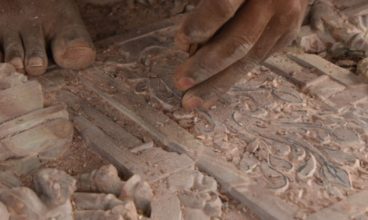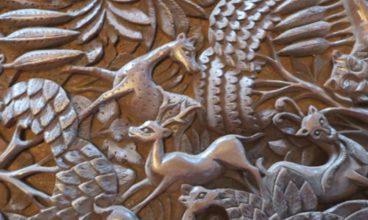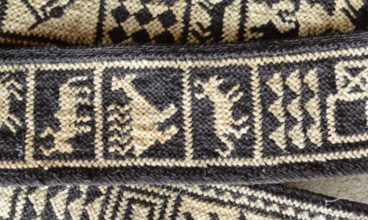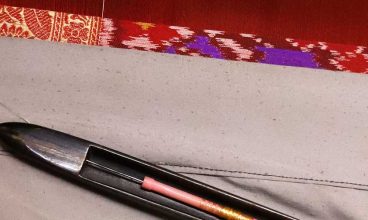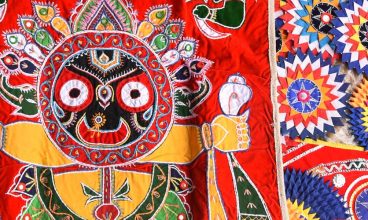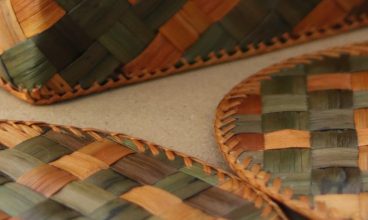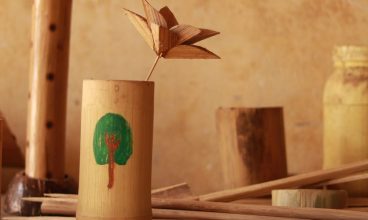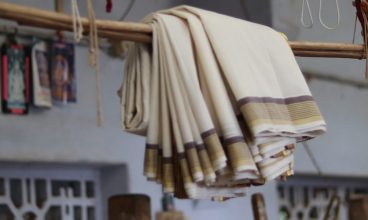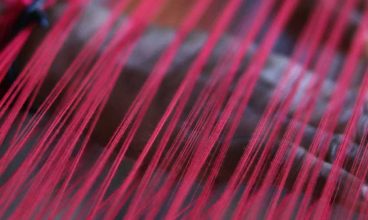In the thriving city of Bhubaneswar, skilled stone carving artisans engage in the meticulous craft of producing iconic religious symbols, luxurious goods, and intricate artworks. Working with stones ranging from hard granite to semi-hard sandstone and softer varieties, these artisans blend tradition with innovation, showcasing the diverse applications of stone carving in religious, functional, and […]
Read MoreSrinagar, in the capital city of Jammu and Kashmir, is known for its crafts. Across the areas of Safa Kadal, Noor Bagh and Fateh Kadal are karkhanas (workshop) famous to crafts such as pashmina, copper carving, embroidery and walnut wood carving. Mostly situated in the by-lanes of downtown Srinagar, it is easy to identify a […]
Read MoreThe durrie, a timeless symbol ingrained in the tapestry of Indian culture, carries with it an 800-year-old legacy of Kharaad / Kharad weaving. This tradition, rooted in the era of ancient palaces, camel herders, and nomadic wanderers, has stood the test of time. The inspiration for this craft can be traced back to the utilitarian […]
Read MoreAshawali Brocade, woven in silk and hailing from the heart of Ahmedabad, Gujarat, carries with it a name that echoes through the corridors of time, tracing its origins back thousands of years. The very essence of its name, Ashawali, finds its roots in the history of a bygone era, under the reign of King Ashapalli. […]
Read MorePipli village a few kilometers from Bhubaneshwar, the capital of Orissa, is a village where all houses and shops along the roads have one thing in common: beautiful appliqué work, in the making or on display, all giving out a loud burst of colour. Established by the King of Orissa for accommodating the craftsmen who […]
Read MoreThe Indian state of Himachal Pradesh is a part of the western Himalayan region with a wide variety of forests. The mountain ranges here are not only inhabited by rich flora and fauna, but it has also influenced the artistic mores of the people in this region. The craft of wood carving is regarded as […]
Read MoreThe plant, which is abundantly grown in Thrissur district of Kerala, forms an important raw material to make one of the prominent and most popular craft of this state: the screw pine craft of Kerala. This craft which is made entirely from the plant itself is considered as the most eco-friendly craft of Kerala. All […]
Read MoreWayanad, a north-eastern district of Kerala is an integral part of the rural economy in bamboo craft production. It is an increasingly important craft form of this state as it provides part-time employment to many cultivators in the lean season which also helps to generate livelihood for a large number of craftsmen. Bamboo mats, curtains, […]
Read MoreKuthampully, a small town located in Thrissur district is known as a traditional cotton-weaving village. The handwoven products from Kuthampully weaving are woven as a traditional costume by the women and men of Kerala. The Kuthampully weaving is mostly famous for its classic off-white fabric with its significant ‘kasavu’ (zari border).
Read MoreKasaragod, is the district situated in the northern part of Kerala surrounded by the western ghats at the east and the Arabian Sea to the west, is known for their weaving. The beautiful sarees that Kasaragod weavers weave are completely made from natural fibres. The sarees from this town are known for their plain body […]
Read More

